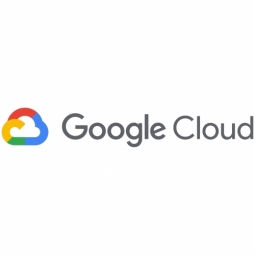Technology Category
- Infrastructure as a Service (IaaS) - Public Cloud
Applicable Industries
- Cement
- E-Commerce
Applicable Functions
- Logistics & Transportation
Use Cases
- Construction Management
- Infrastructure Inspection
Services
- Cloud Planning, Design & Implementation Services
About The Customer
AfterShip is a technology company founded in 2011, headquartered in Hong Kong, with a 40-person team spread across China and India. The company provides e-commerce shipment, label and rate calculation, and self-service return services to 300,000 merchants worldwide. It tracks about 30 million packages per month and has expanded its services to include label and rate calculation and self-service return. The company has been experiencing rapid growth, with its revenue, package transaction numbers, and team size doubling every year for the past three years. Key customers of AfterShip include Wish, Etsy, and Groupon. Nearly half of AfterShip’s customers are based in the United States, about one third in Europe, and the remainder are located in Asia.
The Challenge
AfterShip, a Hong Kong-based company providing e-commerce shipment, label and rate calculation, and self-service return services to 300,000 merchants worldwide, was facing a significant challenge. The company was experiencing rapid growth, tracking about 30 million packages per month and doubling its revenue, package transaction numbers, and team size every year for the past three years. However, it was struggling to maintain this growth trajectory while automating key infrastructure processes, implementing a continuous deployment model, and controlling costs. The company was also keen on maintaining a global presence and high-quality service. AfterShip had initially delivered its applications and services from an incumbent public cloud service, but it was not meeting their needs for scalability and cost-effectiveness.
The Solution
AfterShip decided to migrate to Google Cloud to address its challenges. Google Cloud's network of global data centers with deep connectivity allowed AfterShip to place its infrastructure close to its customers, enabling it to maintain a global presence and high-quality service. The ability to horizontally scale its global database using tools such as Google Cloud Spanner eliminated any limits to its geographic expansion. The managed services provided through Google Cloud allowed AfterShip to focus on building better features for online merchants. AfterShip moved its websites into Google Cloud infrastructure in three data centers around the world. The company used Google Kubernetes Engine and Google Cloud Spanner, and Google BigQuery to store and analyze transaction information. This migration was completed with the help of Google and AfterShip's skilled team members.
Operational Impact
Quantitative Benefit

Case Study missing?
Start adding your own!
Register with your work email and create a new case study profile for your business.
Related Case Studies.

Case Study
System 800xA at Indian Cement Plants
Chettinad Cement recognized that further efficiencies could be achieved in its cement manufacturing process. It looked to investing in comprehensive operational and control technologies to manage and derive productivity and energy efficiency gains from the assets on Line 2, their second plant in India.

Case Study
Digital Transformation of Atlanta Grout & Tile: An IoT Case Study
Atlanta Grout & Tile, a Tile, Stone & Grout restoration company based in Woodstock, Georgia, was facing challenges with its traditional business model. Despite steady growth over the years, the company was falling behind the web revolution and missing out on the opportunity to tap into a new consumer base. They were using independent software from different vendors for each of their department information and workforce management. This resulted in a lot of manual work on excel and the need to export/import data between different systems. This not only increased overhead costs but also slowed down their response to clients. The company also had to prepare numerous reports manually and lacked access to customer trends for effective business decision-making.

Case Study
IFFCO Boosts IT Performance and Innovates Agriculture with Oracle Cloud
Indian Farmers Fertiliser Cooperative Ltd. (IFFCO), the world’s largest manufacturer and marketer of fertilizers in the cooperative sector, was facing several challenges in its quest to innovate and improve the livelihood of farmers in India. The organization had recently launched a new product, nano urea, which brought new demands to IFFCO’s cloud computing needs. The organization needed a reliable cloud vendor to support the processes of 6–7 new manufacturing plants during the upcoming year, enhancing its production capability 300–350 million bottles of nano urea to meet increasing demand. IFFCO’s cloud adoption was driven by a need to innovate. The organization wanted capabilities for a dynamic business that can adapt to the changing needs of the market while growing fast. However, it was inhibited by rigid on-premises data center deployments and the overhead of maintaining legacy systems. IFFCO wanted to apply the elasticity and availability of cloud for improving overall performance of applications at lowest possible operational overhead. Lastly, IFFCO needed to provide the benefits of its technology to all its stakeholders, including employees, members, transporters, and farmers, some of whom have limited literacy. To accommodate all stakeholders, IFFCO wanted to add a voice interface to its applications.

Case Study
Revolutionizing Construction Equipment Rental: A Case Study on ProsRent and ENO8
ProsRent, a startup that won the 'Best Financial Opportunity' and 'Best Pitch' at CodeLaunch 2016, aimed to revolutionize the way construction professionals source and rent heavy equipment. In the construction industry, project managers and contractors typically rent heavy equipment from supply companies. However, predicting inventory can be challenging, and finding the required equipment at the right time and place can be a hassle. If the preferred vendor doesn't have the required equipment, it results in wasted time and money in searching for it, often leading to higher costs due to non-preferred rates and increased delivery costs if the vendor is located far from the job site. Suppliers, on the other hand, desired access to a wider base of trusted renters that they didn't have to vet themselves and wanted to offer dynamic rental pricing based on demand and availability in their market. ProsRent's challenge was to produce a minimum viable product that was fast and first to market but also strong enough to engender loyalty and repeat business from the target market.

Case Study
AI-based Automation for Commercial Office HVAC: A Verdigris Case Study
Modern buildings are required to run longer hours, support a variety of end uses, and contribute to higher levels of economic productivity, leaving a thin margin for error. However, even the most advanced building and environmental control systems have failed to adequately support facilities and operations management. Buildings are often inefficient and the people using them are underserved. To meet occupant comfort and maintain cost and energy efficiency, a dynamic, AI-assisted approach is needed.








